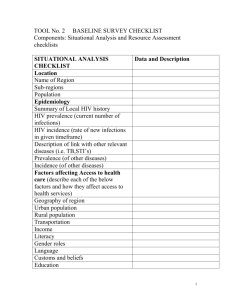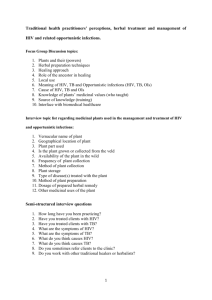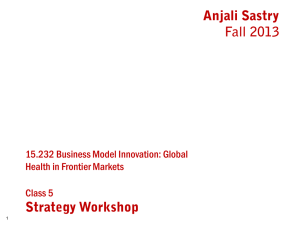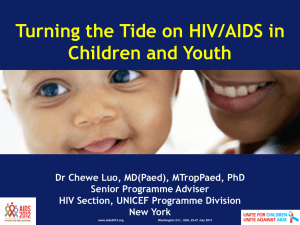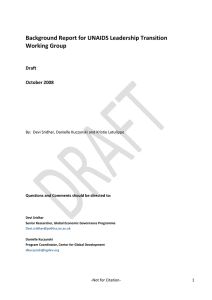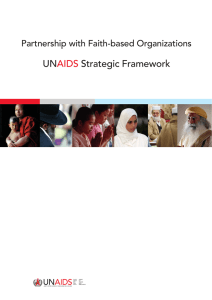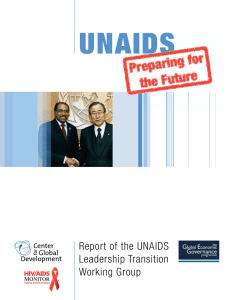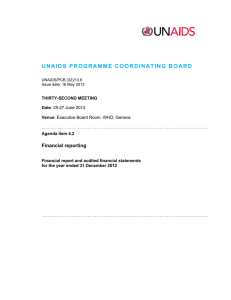Powerpoint - AIDS 2014 - Programme-at-a
advertisement
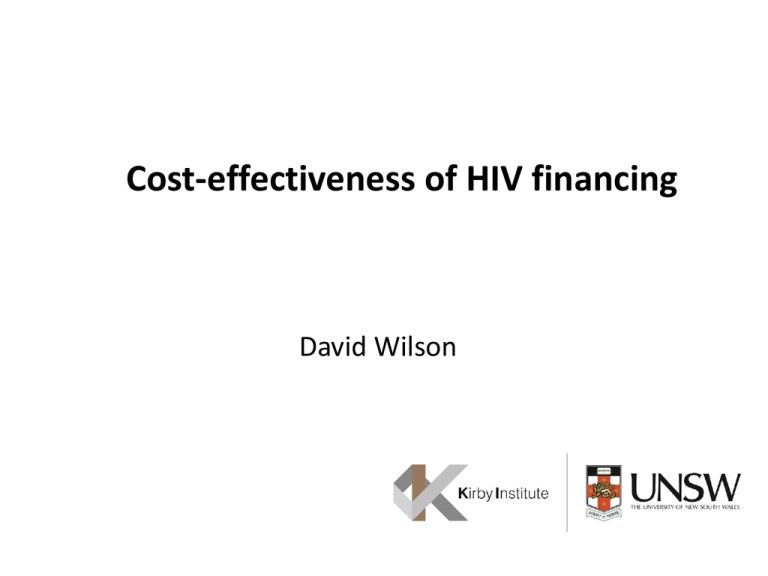
Cost-effectiveness of HIV financing David Wilson Global HIV resourcing Resulted in tremendous health and economic savings • E.g. Avahan achieved scale and coverage – HIV prevalence declined significantly – 19.6% to 16.4% among FSWs (aOR=0.81, p=0.04) Source: Ramesh BM. IBBA two rounds analysis with FSWs in Karnataka, 5 districts. STI 2010; 86 (Suppl 1): i17; http://www.aidstar-one.com/sites/default/files/technical_consultations/mixed_epidemics/day_2/Avahan_program_Gina_Dallabetta.pdf But not enough money to do everything • 2.3 (1.9-2.7) million newly infected in 2012 • 35.3 (29.1-35.3) million PLHIV and growing Source: UNAIDS 2013 global report Much money has been wasted • Administrative and ‘other management’ costs • Programs have not operated most efficiently • Programs have not achieved scale and coverage • Available money has not been allocated to programs which have the largest impact – Proven effective and feasible programs of the greatest cost-effectiveness – Many implemented programs have not been cost-effective (Craig et al JIAS 2014) Epidemiology of HIV in Asia-Pacific • 86% of all 5 million PLHIV in Asia-Pacific are in 5 countries (India, China, Thailand, Indonesia, Vietnam) – 97% in 10 countries • 70% of new infections in the KAPs Source: Kirby Institute estimates based on UNAIDS HIV and AIDS data hub for Asia Pacific Inefficient allocations • HIV prevention funding in Asia poorly targeted Source: UNAIDS The Gap Report (2014): UNAIDS HIV and AIDS data hub for Asia Pacific based on AIDSinfo Online Database; Craig et al JIAS (2014) 17:18822 Need to focus limited resources by geography and population group • 27/77 provinces in Thailand account for 70% of new HIV infections • 43% of Philippines epidemic in Manila MSM • 73% in just 3 cities Investing for the biggest impact: optimization / allocative efficiency • Deciding HIV budget allocations / GF concept sheets / operational plans • Know your epidemic, know your program costs, know your program impact, know your desired outcome • Allocate based on all this knowledge to have the best possible (i.e. optimal) impact Allocations should be based on objectives Different objectives • • • • Minimize incidence Minimize deaths Minimize DALYs Minimize money to achieve multiple targets in a national strategy Different allocations • Determine the allocation of resources or spending required that best meets the objective Mathematical optimization • Formal mathematical approach, with epidemiological model, taken to find the precise “best” / “optimal” solution to meet the objective according to the known epidemiology, costs and outcomes of programs Current allocation Allocation minimizing outcome UNSW- World Bank allocative efficiency tool E.g. An African country (specific country not disclosed) $5.6 million per year Expected new infections, 2013-2020 Infections (‘000s) Packages include condoms, HTC, SBCC Same money, but avert 15% incidence Minimize incidence: different budget amounts An example from an Asian country Large amounts of money on indirect or other management costs $5.6 million per year Large indirect costs: ~50% • Program efficiency can free up this money for direct program efforts for greater impact – E.g. Efficiency study in Ukraine (UNSW, WB, UNAIDS) • NSP costs can reduce by 18% • OST costs can reduce by at least half (stand alone); 43% for integrated sites • ART costs can reduce by 28% (1st line) and 41% (2nd line) Great need to invest smarter: focussed and efficient investments “I simply wish that in a matter which so closely concerns the wellbeing of the human race, no decision shall be made without all the knowledge which a little analysis and calculation can provide”. - Daniel Bernoulli, 1760


